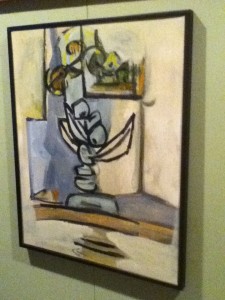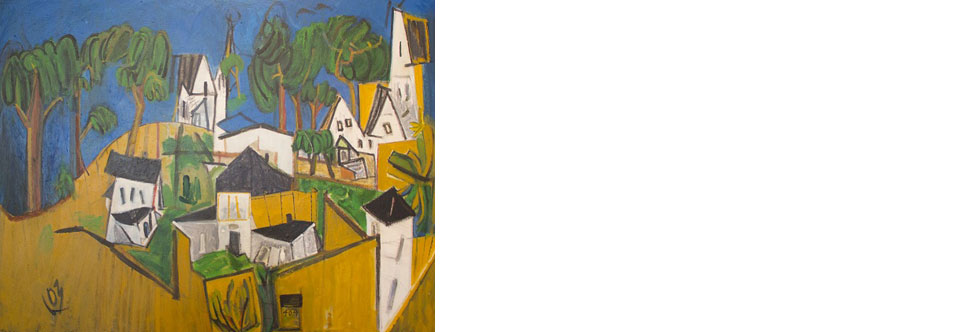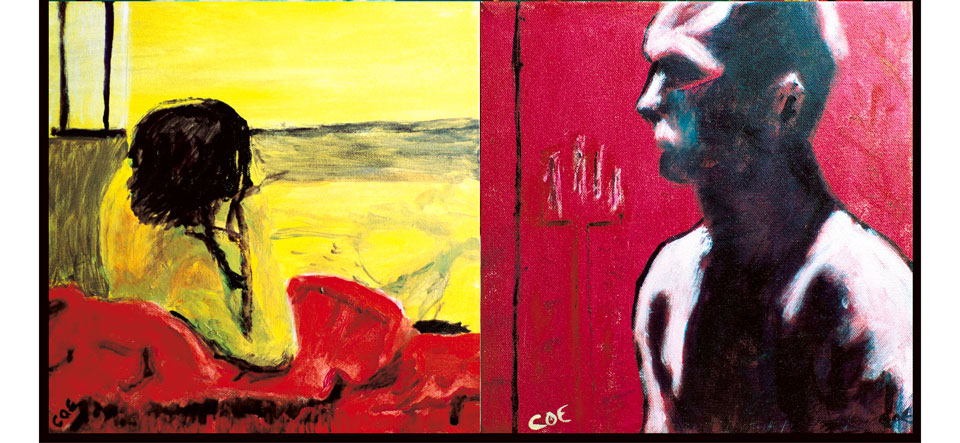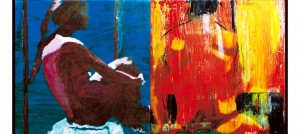 If you seek beauty, you will find it at the MICA Gallery April-May exhibition, works on canvas by one of Lansing’s truly great artists, Grant Guimond. The First Sunday opening, April 1, features an artist’s reception from noon to 4 pm, your chance to see the artist together with his most recent work. The show runs through Monday, May 30, 2012.
If you seek beauty, you will find it at the MICA Gallery April-May exhibition, works on canvas by one of Lansing’s truly great artists, Grant Guimond. The First Sunday opening, April 1, features an artist’s reception from noon to 4 pm, your chance to see the artist together with his most recent work. The show runs through Monday, May 30, 2012.
In the classic still-life pictured here, Guimond builds a light-filled interior of creamy peach and yellow walls. Flickering shadows and gently angled strokes of black frame the central motif, a stacked base, stem, and bowl of blue fruit. But which is the fruit and which the bowl? Is that a reflection under the vase: are we looking into a mirror? And is that a window in the background, or another painting? This is a kind of Cubism, inviting us to determine the point of view–not splintering the objects, but opening up an airy, rhythmic space. This ample room to breathe is new in Guimond’s recent work, and the clarity and elegance of his composition shows how we still live in the abstract moment of Cézanne and Picasso, a moment likely to last as long as the Italian Renaissance.
Guimond’s work reminds us of the early Modern masters in this way too—his visions transform the objects of our daily lives into uncommon opportunities for beauty. He offers these visual archetypes: a woman’s body, a musical instrument, a bowl of fruit on a table, a window, a distant landscape, a painting within a painting, or the maker’s choric gaze. Whether a vibrant still-life with grapes or a woman bather, her thighs burning pink against the bright blue sky, each image reminds us of reality, and stubbornly asserts its own reality.
Guimond favors blocks of color subtly modulated, laid down just thickly enough for us to see their texture and the sureness of his hand. In other works in the show, the artist creates mysterious spaces from opaque washes of paint barely concealing patches of gold, mauve or other jewel-like forms, here hard-edged, there vanishing into a sea of color. The color-forms are gestures, often fraught with emotional resonance: “Moods from anxiety to repose come naturally from my state of being,” the artist notes. Whimsy, ferocity, curiosity, or simmering sensuality, all aspects of the artist’s consciousness are laid out for us to discover and name.
The choice of paintings reflects Guimond’s discipline as a painter. Each grouping represents a steady stream of experiment in visual ideas. Luckily, he has agreed to show a couple of his large white paintings, which he calls “sexy,” I think because they are so daringly bare of paint. A few zen sculptures, constructed from the stuff of every day—a stopper out of the sink, a magnifying glass, a wire with tape hanging down for legs—also adorn the show.
A debonair 60-something, Guimond is wonderfully free of regret, maintaining a steady sense of humor about himself and about life, and his good will shows in passages of every single work of art here at MICA. He paints and always has strictly for art’s sake, nothing else. That doesn’t mean we shouldn’t buy his paintings, which are decorative in the very best sense of the word. Each one is a gem; in pairs, they instantly define a space. If you are an art collector, or aspire to be one, this is the time to come and get your new Guimond!
Dr. Leslie Cavell, Oakland University





